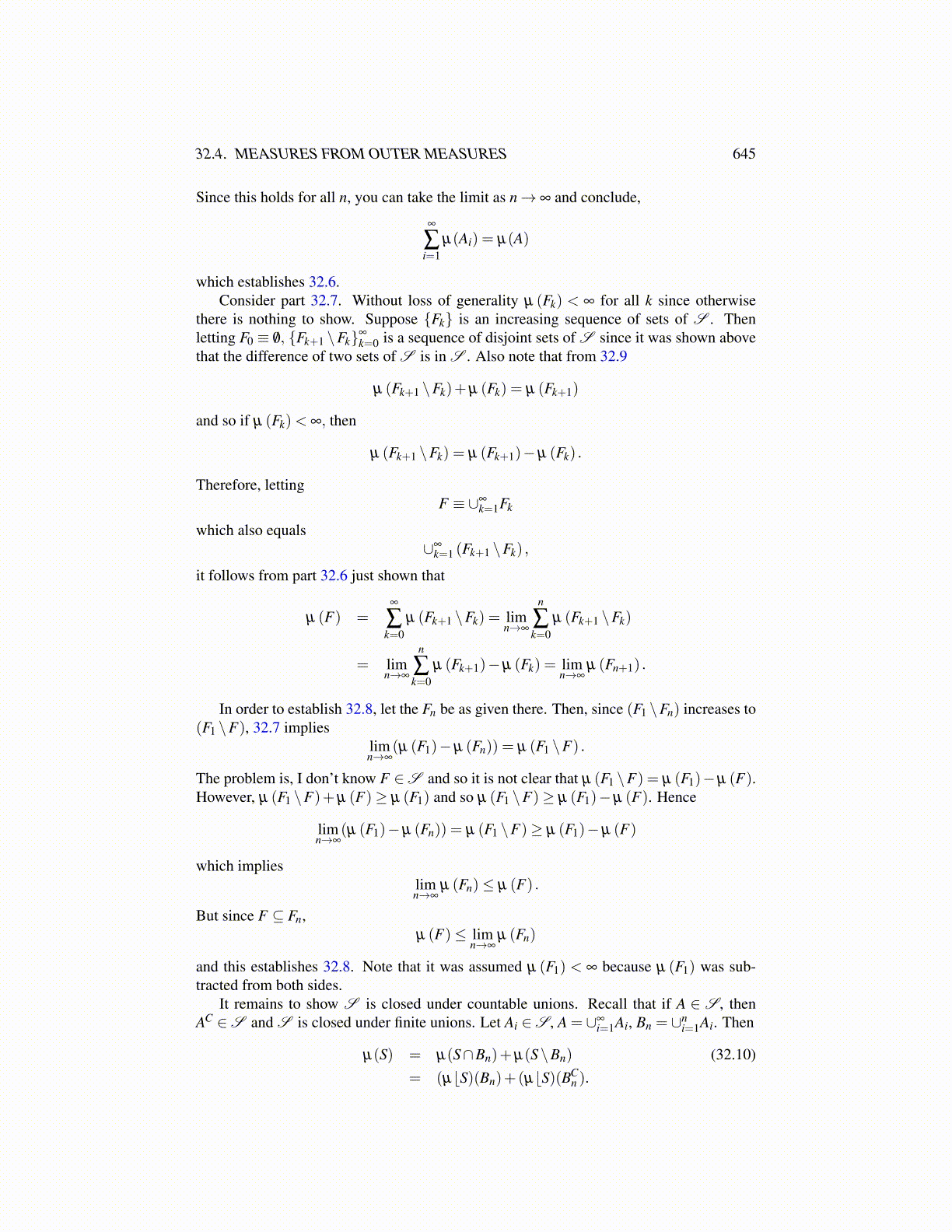
32.7. NONNEGATIVE SIMPLE FUNCTIONS 645
Proof: From the definition,∫∞
0f (λ )dλ = lim
R→∞
∫ R
0f (λ )dλ = sup
R>1
∫ R
0f (λ )dλ
= supR>1
supM
∫ R
0f (λ )∧Mdλ
= supM
supR>1
∫ R
0f (λ )∧Mdλ
= supM
supR>1
∫ a
0f (λ )∧Mdλ
= supM
∫ a
0f (λ )∧Mdλ ≡
∫ a
0f (λ )dλ .
Now the Lebesgue integral for a nonnegative function has been defined, what does it doto a nonnegative simple function? Recall a nonnegative simple function is one which hasfinitely many nonnegative real values which it assumes on measurable sets. Thus a simplefunction can be written in the form
s(ω) =n
∑i=1
ciXEi (ω)
where the ci are each nonnegative, the distinct values of s.
Lemma 32.7.2 Let s(ω) = ∑pi=1 aiXEi (ω) be a nonnegative simple function where the
Ei are distinct but the ai might not be. Then∫sdµ =
p
∑i=1
aiµ (Ei) . (32.12)
Proof: Without loss of generality, assume 0≡ a0 < a1 ≤ a2 ≤ ·· · ≤ ap and that µ (Ei)<∞, i > 0. Here is why. If µ (Ei) = ∞, then the left side would be∫ ap
0µ ([s > λ ])dλ ≥
∫ ai
0µ ([s > λ ])dλ
= supM
∫ ai
0µ ([s > λ ])∧Mdλ
≥ supM
Mai = ∞
and so both sides are equal to ∞. Thus it can be assumed that for each i,µ (Ei)< ∞. Thenit follows from Lemma 32.7.1 and Lemma 32.5.2,∫
∞
0µ ([s > λ ])dλ =
∫ ap
0µ ([s > λ ])dλ =
p
∑k=1
∫ ak
ak−1
µ ([s > λ ])dλ
=p
∑k=1
(ak −ak−1)p
∑i=k
µ (Ei) =p
∑i=1
µ (Ei)i
∑k=1
(ak −ak−1) =p
∑i=1
aiµ (Ei)
Lemma 32.7.3 If a,b ≥ 0 and if s and t are nonnegative simple functions, then∫(as+bt)dµ = a
∫sdµ +b
∫tdµ .